Best Outboard Engines
Which outboard engines stand head and shoulders above the rest? We identify 10 you’d love to have on your boat.
During the past decade outboard engines have grown dramatically in size, popularity, and reliability, with technological advancements so important that the once-settled two-stroke versus four-stroke debate has been re-opened, alternative fuel outboards have become a viable option, and significant benefits like joystick steering are now a consideration. So, how will you know which outboard to choose? Truth be told there aren’t many “bad” options on the market these days, but there certainly are some stand-outs that warrant some added attention. So before you make any moves, be sure to check out these 10 best-of-the-best outboard engines.
Suzuki DF25
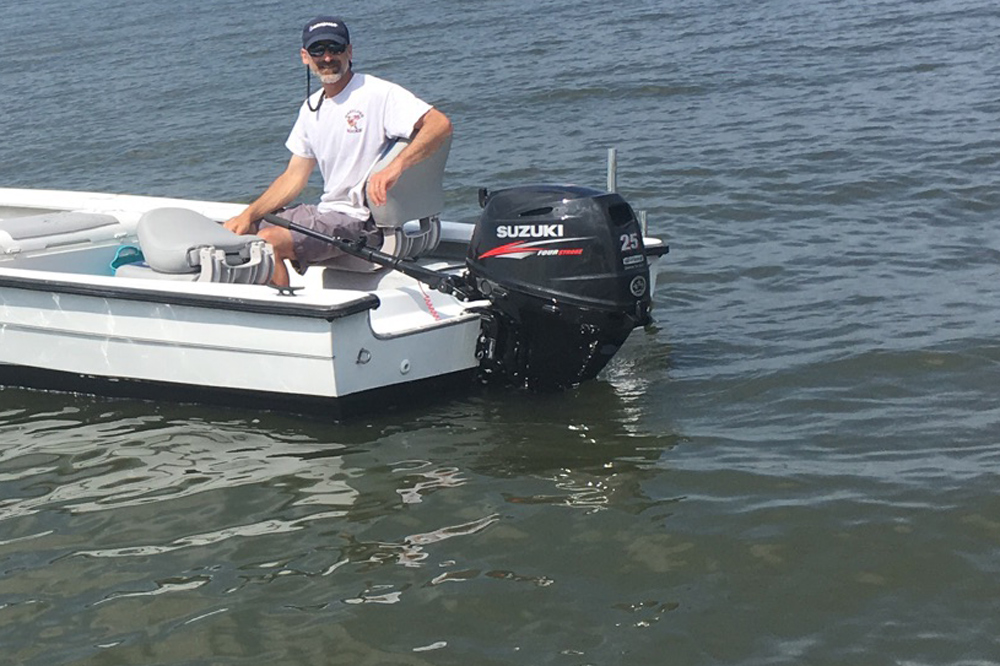
Above: Hour upon hour of testing has proven the reliability and easy starting of the DF25. Photo by Lenny Rudow.
In 2014 when the new Suzuki DF25 hit the market, it was the very first outboard of its size to incorporate battery-less EFI. This enables reliable one- to two-tug starting—for real. We tested one for three entire seasons and rarely had to pull the starter cord more than once. EFI also improves fuel efficiency. But perhaps the biggest advantage to eliminating the carburetor is that the closed pressurized system doesn’t leave any fuel exposed to the air, which eliminates most of the ethanol issues that plague small carbureted engines.
The DF25 also has a unique air intake system which improves performance; check out a video by our Outboard Expert of the Suzuki 25 and 30 outboards to learn more. Overall this is one of the lightest outboards in the 18.4kW (25PS)/22.1kW (30PS) four-stroke outboard class, plus the advanced fuel injection system and modern electronics combine to deliver class-leading fuel-efficiency.
Yamaha F25
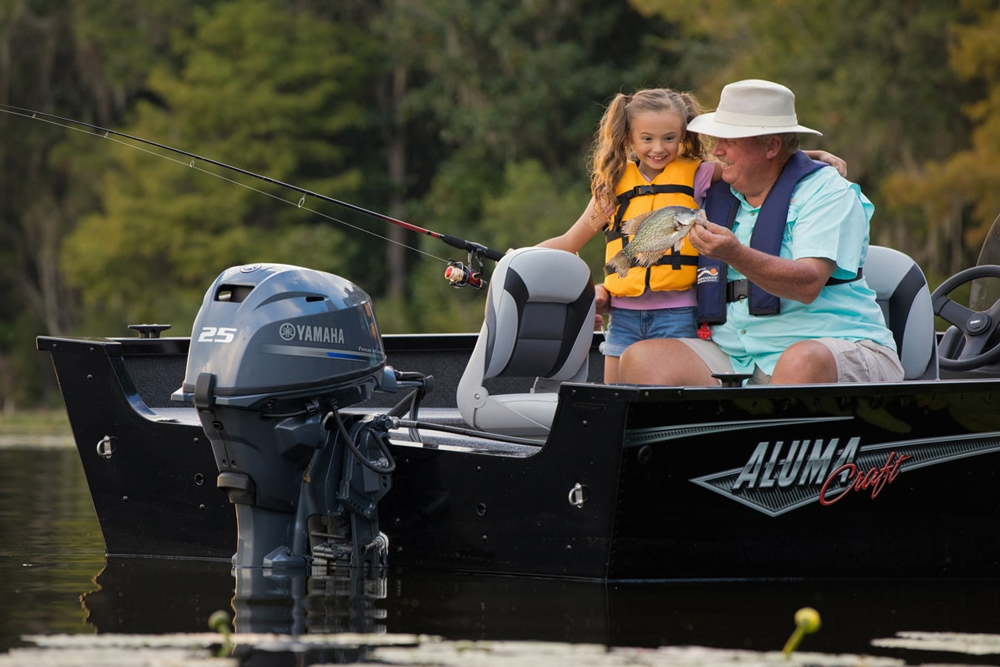
You’ve gotta love where an engine like the Yamaha F25 can take you.
Another strong contender in the 25 horsepower class is the Yamaha F25. One of our contributors spent a day running the F25 and as you can see in the test and review video, it actually offers peak performance at the top of the RPM range. At 5500 RPM it burns a mere 1.8 GPH and on the AlumaCraft Escape 145 test boat, cruised along at 12.1 MPH. Most outboards of this size get run for extended periods at or near wide-open throttle, so this high-end efficiency is a big deal. On top of that, the F25 has battery-less EFI and weighs 136 pounds, making it the lightest 25 HP outboard currently on the market.
Find out more about all the newest Yamaha outboard models in The Outboard Expert: New F25, F75, F90 Outboards from Yamaha.
Mercury 75/90/115
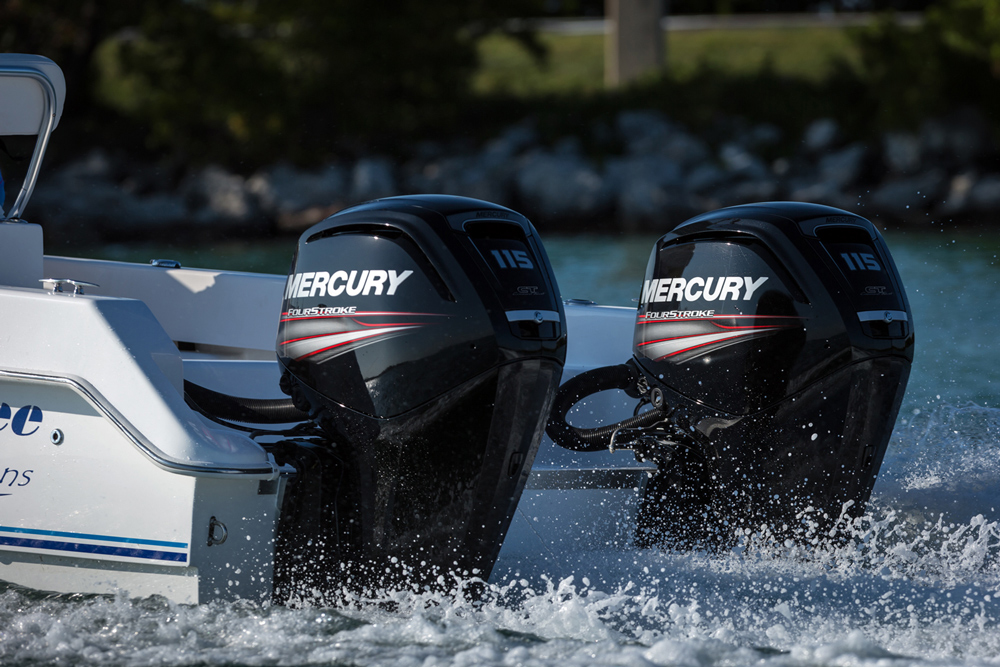
The mid-sized Mercury FourStrokes get a big thumbs-up.
Five years ago Mercury rolled out a new 2.1-liter outboard in 75, 90, and 115 HP ratings, and these engines have close to the most displacement in their class while keeping weight at the lowest end of the class. At 359 pounds, in fact, it under-cuts the older 1.7-liter Mercury offerings by 40 pounds. Our Outboard Expert Charles Pluddeman described these engines as running “sewing-machine smooth,” and according to Mercury, an amazing 17,000 testing hours went into developing these outboards.
Read Mercury Debuts All-new 75 HP, 90 HP, and 115 HP FourStroke Outboards.
Torqeedo Deep Blue
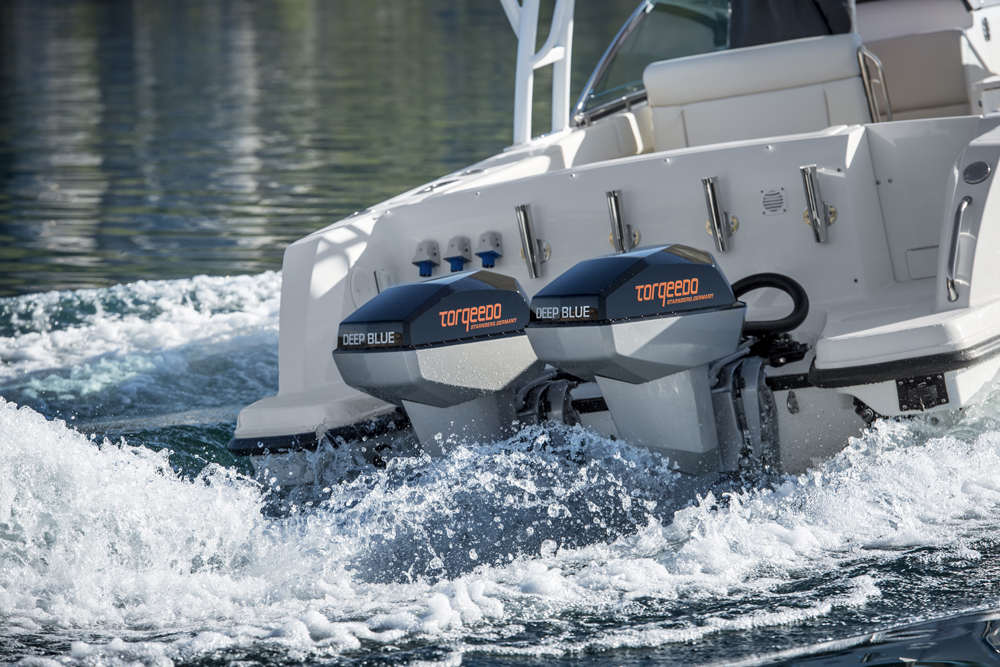
Can an electric outboard compete with flaming fossil fuels? In this case, the answer is yes.
The Torqeedo Deep Blue is an electric outboard which marks this well-known manufacturer’s first attempt at building a mid-sized outboard, with a 60-watt power output that produces thrust approximately equal to an 80 HP gasoline outboard. The advantages of running on all electric are obvious: there’s no exhaust, little noise, no gasoline purchases nor fuel tank to fill, it produces full torque at all speeds, and has no service costs. It is an expensive package—although the engine itself lists at under $24,000 you’ll also have to buy lithium-ion batteries ranging from 9,999 to $32,000—and battery weight (between 213 and 612 pounds depending on the battery system you choose) is significant. But it’s also a serious leap forward in the world of electric outboards. Available batteries include 10 kWh and 40 kWh options, which can provide ranges of up to more than 80 miles at slow speeds and 25 miles running full-tilt.
See our review and video of the Torqeedo Deep Blue.
Suzuki DF90
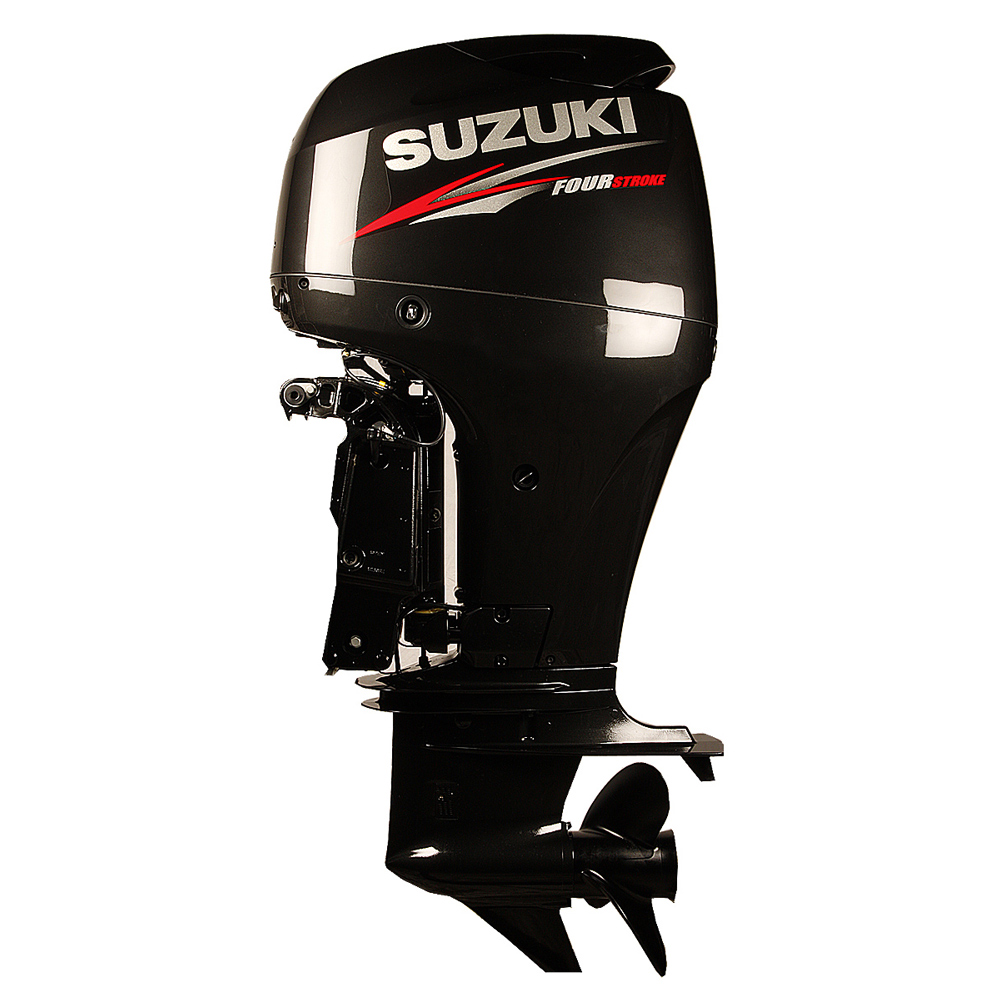
Long term testing has proven the Suzuki DF90 to be an incredibly reliable engine.
The original DF90 was a home-run hit for Suzuki, but after being produced for over a decade, the motor was redesigned in mid-2018. Net result? A smaller, lighter, more fuel-efficient home-run hit. The next-gen 90 has a 91.7 cid four-cylinder DOHC powerhead, an offset driveshaft, and a two-stage gear reduction. That makes for a package three inches shorter and 75 pounds lighter than the old version.
We don’t have a full review of the DF90, but you can see the pair we were talking about in action in our Boating Tips: Docking a Twin Engine Powerboat video.
Yamaha V-Max SHO 115
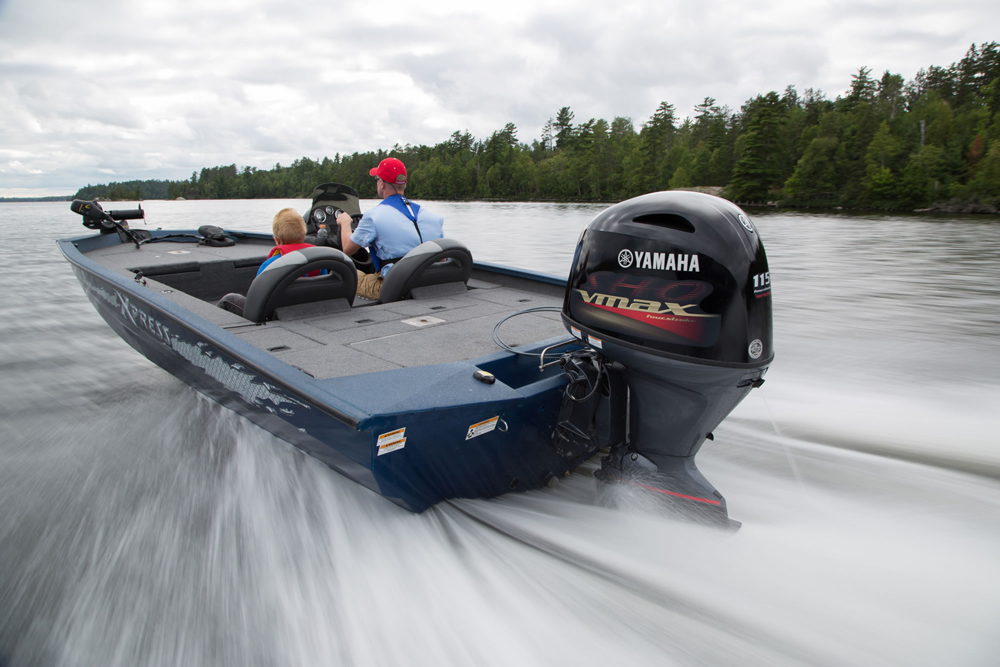
You want neck-snapping acceleration and Yamaha-style power? The V-Max SHO 115 will do the trick.
In the 115 HP class we love the Yamaha V-Max 115 SHO, a juiced version of their uber-reliable and time-tested 1.8L F115. The V-Max model spins 5300 – 6300 RPM (as opposed to 5000 – 6000 for the F115) thanks to revised camshafts, a re-mapped ECU, and electronically-controlled throttle. As a point of comparison, that shakes out to an additional 2.7 MPH at top-end on a Skeeter TZX 170 bass boat. Industry standards allow for horsepower ratings with a plus or minus deviation of up to 10-percent, and our Outboard Expert Charles Pluddeman surmised that the SHO version may actually produce as much as 126 horsepower at top-end.
Read Outboard Expert: Yamaha V Max SHO 115 to learn more.
Evinrude ETEC G2

The G2 outboard line is one of the newest – and most unusual looking—outboards on the water today.
A few years back Evinrude introduced their new line of DFI two-strokes, called the G2. These started out at 200, 225, 250, and 300 HP models in a 3.4 liter package, and then were complemented with 150, 175, and 200 HP models built around a 2.7 liter powerhead. Then just last year Evinrude extended the line even further, with an in-line-three 1.9-liter version covering 115, 140, and 150 horsepower. Despite the fact that BRP has discontinued Evinrude in 2020, we’re including the entire batch here as one of the top 10 simply because the entire G2 line had some rather awesome advantages and they are still available in many places (the company will continue to supply customers and dealers service parts as well as honor manufacturer limited warranties, plus offer select programs to manage inventory).
These motors have a power hydraulic helix steering system built in; rigging and mounting is self-contained and much slicker than usual; systems are all digital; gearcase lube can be visually inspected via a reservoir; and regular maintenance is greatly reduced with a five-year, 500 hour stretch between visits to the dealer. Perhaps most shocking is that in test after test, we’ve seen a fuel efficiency advantage ranging between 10 and 15 percent as compared to four-strokes. And while they still aren’t as quiet as those near-silent four-strokes, just in the past year Evinrude has managed to re-engineer out a significant amount of the volume.
For more information on the 150, 175, and 200 HP models read BRP Debuts New 2.7-Liter Evinrude E-TEC G2 Outboards. To read more about the 3.4-liter versions, read New Evinrude E-TEC G2 outboards.
Yamaha F250
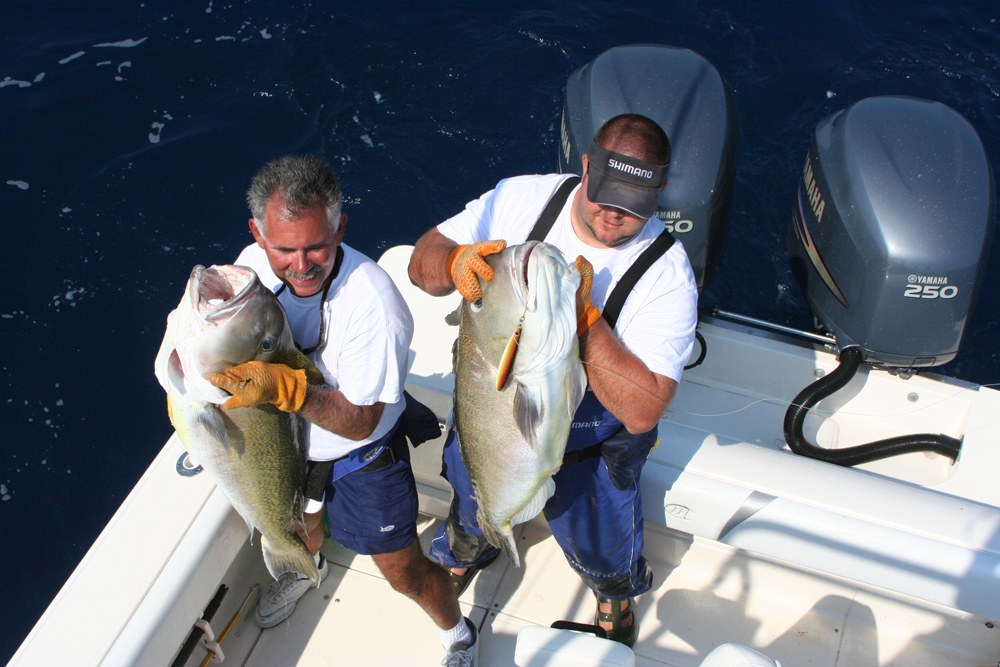
Walk any dock in America with outboard-powered saltwater fishing boats in its slips, and you’re bound to see the Yamaha F250. Again, and again, and again.
When it comes to four-stroke outboards used to power mid- to large-sized boats, the ubiquitous Yamaha F250 is the hands-down favorite of boaters across the nation. In fact it’s become something of an icon, powering fishing boats, cruiser, and even large pontoons as well as everything in between. This 4.2-liter powerhead has been around for close to a decade and has proven itself with unbeatable reliability in countless situations on countless transoms.
To learn more, check out Yamaha Reveals New 4.2 Liter V6 Model. This may be an old article, but it’s still accurate and in this case, the engine’s age proves its worth beyond any question.
Suzuki DF350A
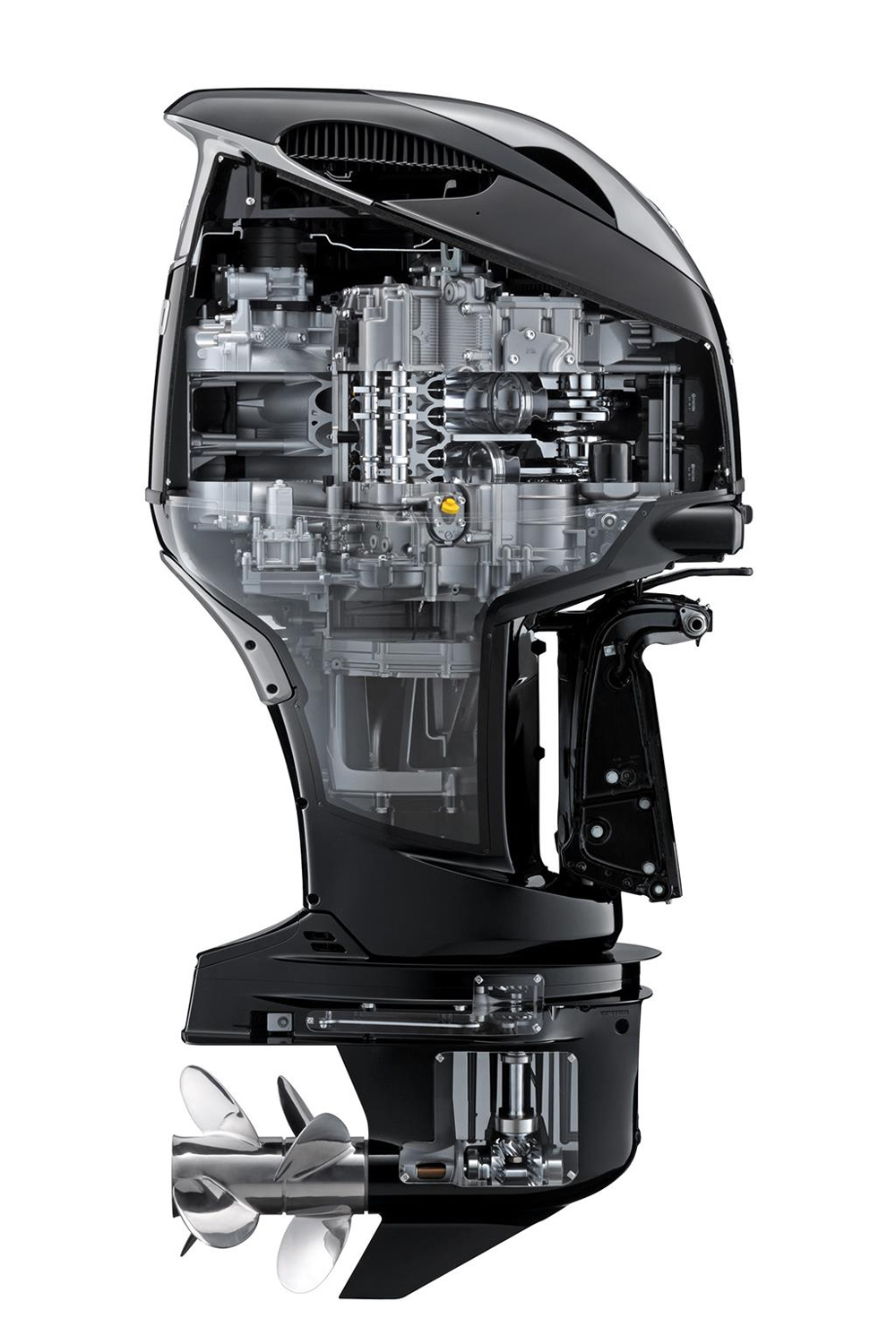
Are two propellers really better than one? Suzuki says yes.
Suzuki shocked the marine world when it rolled out the DF350A, a 4.4-liter V6 which is not only the most powerful Suzuki has ever offered, but also has contra-rotating propellers. These are counter-rotating props spinning on a single shaft, and they give the lower unit gobs of bite to harness every bit of torque and get large, heavy boats on plane quickly. The arrangement is so effective that engine trim has little impact on hole-shot, and although this engine is just a few years old, reports thus far are of customers wearing wide grins at all times.
Check out Suzuki DF350A Twin Propeller Outboard Engine Introduced to learn more.
Mercury's FourStroke 3.4L V-6 and 4.6L V-8s
The final engine on our list is another new line-up of outboards: Mercury’s FourStroke 3.4L V-6 and 4.6L V-8s. These engines are available in 175 to 300 HP models in naturally aspirated versions. These are the lightest models of their size, have Adaptive Speed Control (to maintain RPM regardless of load or wave conditions) and a service hatch in the cowl for easy access. The initial roll-out for these engines began in 2018 with the V-6 and rapidly expanded with the V8. Extending the line even further, in the past year Mercury began supercharging these engines to create new Verado models up to 400 horses, and a Mercury Racing version that takes it all the way up to 450 horsepower. Just how well these will hold up over the long haul is impossible to say at this point, but early reports from consumers indicate that the naturally-aspirated versions have thus far been very reliable and we’re aware of some FourStrokes in commercial service that have already passed by the 2,000 hour mark with zero problems.
Honorable Mention
While we said we’d tell you about these 10 best outboards, we can’t let you go without covering one more powerplant which has an important place in this discussion. The Seven Marine 627 is world’s largest outboard and is also the world’s most expensive outboard (prices vary depending on options and paint jobs but breaking the 100K mark isn’t uncommon). There were some early reports of corrosion issues, so we hesitate to bump one of these other proven contenders to get the Seven Marine on the list. However, Volvo Penta bought Seven Marine a few years ago and the company has a deep well of knowledge when it comes to marinizing GM blocks. As a result, expectations are high for the future of Seven Marine’s offerings.
Stay tuned, because a year or two of experience with new FourStroke models may well cause a juggling of the list the next time it comes to naming the 10 best outboard engines.
For more information about different outboard models, makes, and sizes, be sure to peruse our Engines & Parts Reviews pages.












